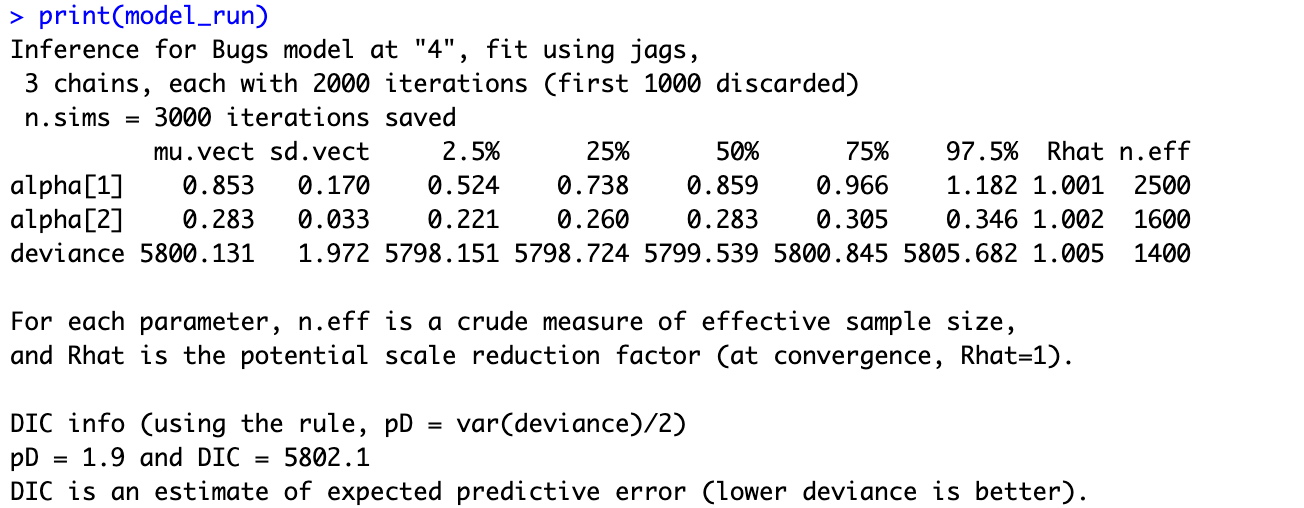where $p_{i}$ is the probability of opening the email and $y_{i}$ is zero or one indicating whether target i has opened the email. And you model thatthe probability with an intercept that changes according to the system being used:
You can see the full distribution estimated for $logit(p1)$ of system one ($alpha[1]$) and for $logit(p2)$ of system two ($alpha[2]$)(you can simply use $inv.logit()$ function to calculate the probability of opening the email for each). As you can see the model successfully estimated the true values (check the mean values $mu.vect$) and you can also observe the 95% CI which doesn't contain zero meaning the results are significant in frequentist terms. Note that the confidence interval associated with $alpha[1]$ is wider because you have less data on it but it doesn't matter as long as you can reasonably estimate the uncertainty (which we did) and see if you can live with that. Then increasing the sample size depends on how much risk are you willing to take.
Also you can easily expand this to incorporate different demographic groups and run the model over the whole dataset you have and give it a hierarchical structure to share information and reduce the uncertainty on the $alpha$ parameters you want to estimate without increasing the sample size.

